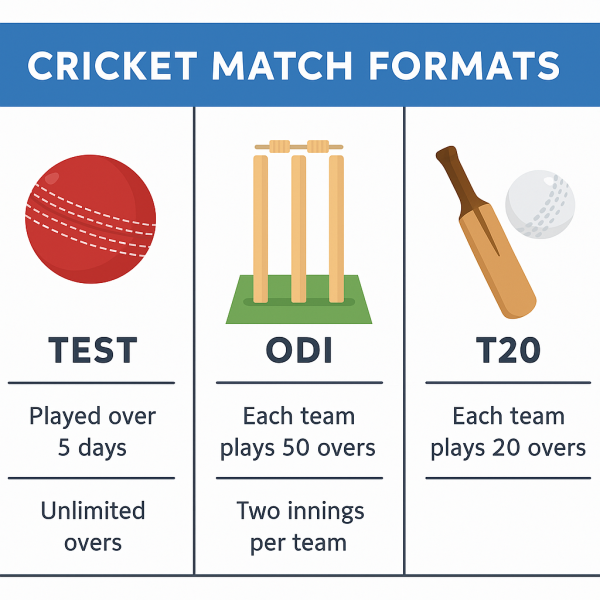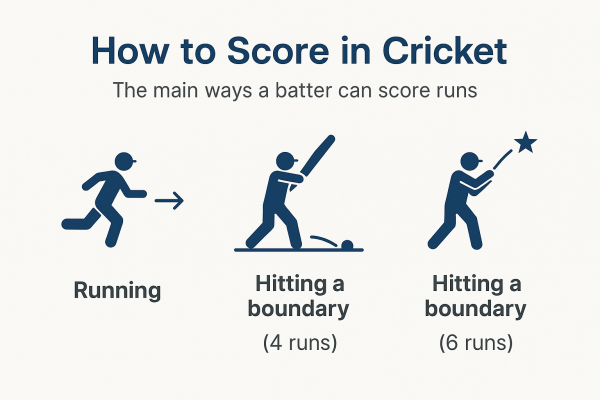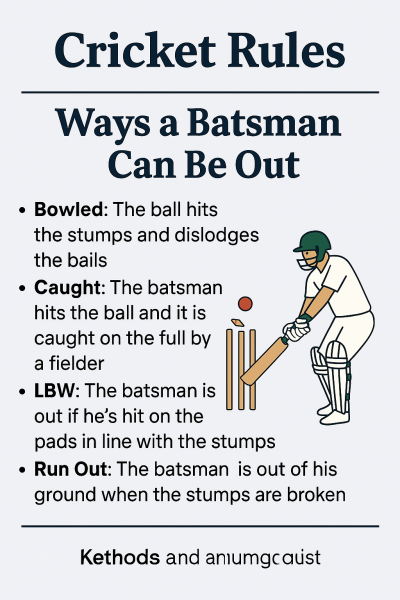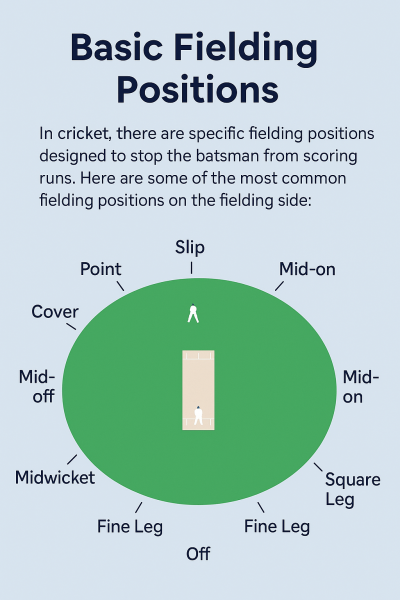🏏 What is Cricket?

Cricket is a globally loved sport that blends skill, strategy, and teamwork. Played between two teams of 11 players, the basic aim is for one team to score runs while the other tries to restrict them and dismiss their batters. A match involves batting, bowling, and fielding — each governed by specific cricket rules that ensure fair play.
The sport originated in England and has evolved into a national obsession in countries like India, Pakistan, Australia, and South Africa. Governed by the International Cricket Council (ICC), cricket has become one of the most-watched sports worldwide. Whether played professionally in stadiums or casually in Indian gullies, the essence of cricket remains the same: excitement, competition, and community.
🧮 How to Score in Cricket

Scoring runs is the primary goal for the batting side in cricket. Batters can score runs by running between the wickets after hitting the ball or by sending the ball to the boundary:
-
4 runs: When the ball crosses the boundary after bouncing.
-
6 runs: When the ball clears the boundary without touching the ground.
-
1 to 3 runs: By running between the wickets.
In addition to these, teams can gain extras like no-balls, wides, byes, and leg byes, which are crucial in tightly contested games. All these scoring methods are outlined in the official rules of cricket, ensuring fairness and variety in the game.
Understanding how runs are scored is essential for players and fans alike, especially when tracking match stats or analyzing game strategies.
❌ Ways a Batsman Can Be Out

There are several ways a batsman can be dismissed under standard cricket rules. Knowing these rules is key for both teams — for bowlers and fielders trying to take wickets, and for batters trying to survive.
Here are the most common dismissals:
-
Bowled – The ball hits the stumps and dislodges the bails.
-
Caught – A fielder catches the ball before it touches the ground.
-
LBW (Leg Before Wicket) – The batter’s leg blocks a ball that would have hit the stumps.
-
Run Out – A fielder hits the stumps before the batter completes a run.
-
Stumped – The wicketkeeper removes the bails while the batter is outside the crease.
-
Hit Wicket – The batter accidentally knocks down the stumps while playing a shot.
These rules not only add complexity to the game but also make it more thrilling and tactical.
🧤 Basic Fielding Positions

Fielding plays a crucial role in the outcome of a cricket match. Every fielder has a unique responsibility based on their fielding position, and smart positioning can stop runs or take key wickets.
Some important fielding positions include:
-
Slip & Gully – Positioned to catch edges near the wicket.
-
Point & Cover – On the off-side, stopping square or cover drives.
-
Mid-on & Mid-off – Near the bowler to block straight drives.
-
Square Leg, Fine Leg, and Third Man – To capture flicks or mis-hits on the leg and off sides.
While cricket rules do not strictly define where each player must stand, limited-overs formats like ODIs and T20s do have fielding restrictions (e.g. powerplay rules), adding a strategic twist to every delivery.
🕒 Types of Cricket Matches

Cricket is played in different formats, and each format follows a variation of the basic cricket rules. Here are the three most popular ones:
-
Test Matches
-
The longest format, lasting up to five days.
-
Focuses on patience, endurance, and long-term strategy.
-
Considered the purest form of the game.
-
-
One Day Internationals (ODIs)
-
Limited to 50 overs per team.
-
Offers a balance between traditional and modern styles.
-
Includes powerplays and fielding restrictions.
-
-
Twenty20 (T20)
-
20 overs per team, lasting about 3 hours total.
-
High-energy format known for big hits and quick results.
-
Most popular in domestic leagues like the IPL.
-
Each match type brings its own excitement and appeals to different audiences — making cricket a versatile and inclusive sport.
🏁 Final Thoughts on Cricket Rules
Whether you’re a new fan or an aspiring cricketer, understanding the rules of cricket is your first step to enjoying the game more deeply. With its combination of tradition and innovation, cricket continues to grow — especially in India, where it’s not just a sport, but a national identity.
This guide is your foundation. As you watch matches or join in games, you’ll find that the rules come alive through experience, cheers, and unforgettable moments.
